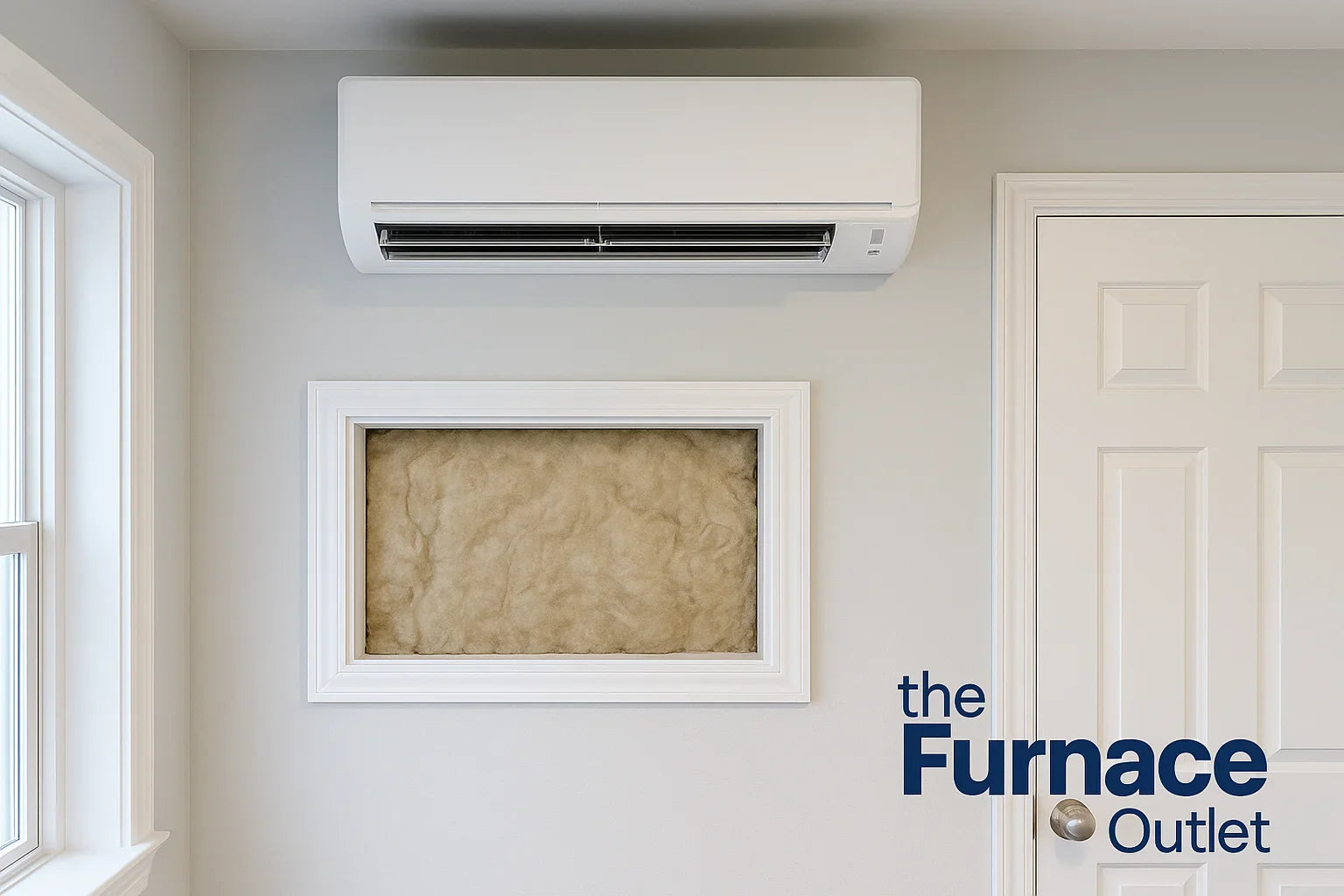Key Takeaways
-
Insulate first—then upgrade HVAC.
-
Good insulation can cut bills by up to 30%.
-
Less run-time means fewer repairs and longer system life.
-
Sealing your home boosts comfort and reduces drafts.
-
Easy DIY fixes like weather-stripping can save money fast.
Why Insulation and Mini-Splits Belong Together
Walk into any U.S. home and you’ll find two things stealing comfort: heat moving where it shouldn’t and HVAC units fighting to keep up. Mini-splits already beat old-school ducted systems by avoiding leaky ductwork, but they still battle heat flow through walls and attics. Insulation is the quiet partner that blocks that flow. When you thicken the thermal blanket around your living space, your mini-split runs at lower speeds, sips electricity, and lasts longer. In today’s push for lower utility bills and greener homes, matching insulation upgrades with efficient equipment ranks among the smartest moves a homeowner can make. This guide unpacks the science, savings, and step-by-step actions experts recommend for real-world results.
How Insulation Slashes Energy Loss
Heat always seeks balance: it sneaks into cool rooms during summer and slips out during winter. Fiberglass batts, spray foam, and dense-pack cellulose slow that movement by trapping air in tiny pockets. The higher the R-value, the stronger the resistance to heat flow. When walls, attics, and crawlspaces hit recommended R-values for your climate zone, a mini-split’s inverter compressor can cruise at low speed instead of cycling on full blast. This steady operation keeps temperatures within ±1 °F, cuts noise, and avoids the power spikes that make meters spin. Think of insulation as the insulation-equivalent of cruise control—maintaining speed without burning extra gas.
Lower Bills, Longer System Life
Every minute your mini-split idles instead of racing, you pay less and stress parts less. Real-world monitoring* shows homes that add attic R-49 insulation before installing a ductless heat pump cut annual electricity use by roughly 25–30 %. Fewer on-off cycles also mean compressors, fans, and electronic boards last longer, delaying costly replacements. In fact, many technicians see mini-splits in well-sealed homes still humming after 20 years. That’s years of avoided service calls and landfill waste. If you want numbers before spending, The Furnace Outlet’s free Sizing Guide breaks down BTU loads so you can estimate savings accurately.
Comfort & Air Quality Gains
Insulation doesn’t just save money—it feels better. By blocking outdoor extremes, rooms stay a steady temperature from wall to wall, ending “cold-corner syndrome.” Tight envelopes also reduce outside dust and pollen sneaking in through cracks, helping allergy sufferers breathe easier. Pair this with a ductless mini-split system that has multi-stage filtration and you get cleaner, drier air year-round. Add smart humidity control and condensation risk drops, protecting drywall and wood floors. In short, good insulation plus modern ductless tech equals quieter rooms, cleaner air, and fewer thermostat fights.
Audit and Upgrade Your Insulation
Start in the attic—heat rises, so under-insulated attics bleed energy fastest. Measure depth; if it’s under 13 inches (about R-38 fiberglass), top up. Next, probe exterior walls with an infrared camera or hire an energy auditor. Dense-pack cellulose blown into wall cavities often pays back in 3–5 years in colder zones. Spray foam shines in rim joists and knee walls where irregular framing leaves gaps. For crawlspaces, upgrade to R-19 rigid foam or close-cell spray to cut moisture and radon entry. Remember to maintain ventilation and vapor barriers so new insulation doesn’t trap moisture inside the envelope.
Stop Air Leaks Fast
Even tiny gaps undermine the best insulation. On a windy day, feel for drafts around windows, doors, attic hatches, and plumbing penetrations. Use caulk for hairline cracks and foam backer rod for wider joints. High-quality weather-stripping on exterior doors costs under $20 and pays back in weeks. Seal electrical boxes on exterior walls with gasket pads, and don’t forget recessed lights—IC-rated, air-tight cans prevent heated air from escaping into the attic. When leaks are sealed, your mini-split’s variable-speed fan can ramp down, reducing watt draw and noise.
Size and Zone Your Mini-Split the Right Way
An oversized unit cycles off too quickly, missing the dehumidification sweet spot; an undersized one runs flat-out, wasting energy and wearing components. Work with a professional who follows Manual J calculations or use the design-center photo quote service to nail load numbers. Once sized, exploit built-in zoning: keep bedrooms cooler at night while dialing back unoccupied spaces. For multi-zone installs, consider DIY ductless mini-splits that come pre-charged for easy homeowner installation and separate heads for each zone.
Keep It Running Smoothly with Maintenance & Smart Controls
A well-insulated home gives your mini-split a head start, but maintenance seals the deal. Clean washable filters every month in pollen season and clear leaves from the outdoor condenser so airflow stays strong. Inspect the line-set insulation annually; UV damage can slash efficiency. Pair the system with Wi-Fi thermostats or smart controllers to auto-setbacks when you’re away. Many brands now integrate with voice assistants, allowing quick temperature tweaks to avoid overheating or overcooling. Over time, these small adjustments shave more dollars off the power bill and keep indoor temps rock-steady.
Frequently Asked Questions
How much insulation do I need before installing a mini-split?
Aim for Department of Energy recommended R-values for your climate. For many U.S. regions that’s R-38–R-60 in attics and R-13–R-21 in walls.
Will better insulation let me buy a smaller mini-split?
Yes. Lower heat loss = lower BTU requirement. Always recalculate loads after insulation upgrades.
Do window shades really help?
Absolutely. Shades, blinds, or Low-E films can cut solar gain by 30 %, easing mini-split workload.
Where can I learn more about room-by-room heating choices?
Check our HVAC Tips blog for deep dives and our PTAC sizing chart and guide for space-specific advice. We also post updates in our latest HVAC news section.
Ready to Start Saving?
Upgrade insulation, pick the right ductless unit, and watch the utility bills drop. Browse our full line of energy-efficient mini-splits or get a fast, free load estimate today.







